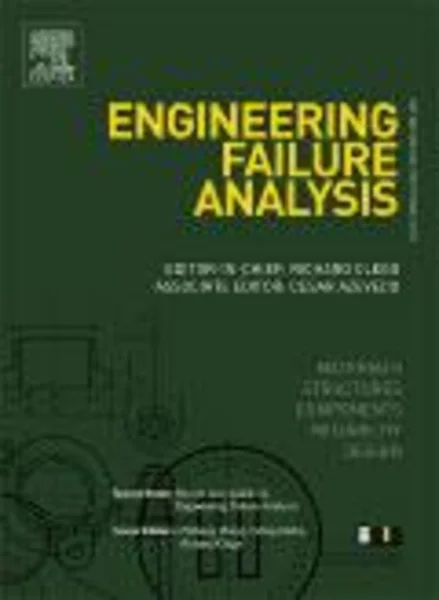-
analysis on a failed 2.25cr–1mo reheater bent tube at upper bank vertical tubes region
جزئیات بیشتر مقاله- تاریخ ارائه: 1390/01/01
- تاریخ انتشار در تی پی بین: 1390/01/01
- تعداد بازدید: 683
- تعداد پرسش و پاسخ ها: 0
- شماره تماس دبیرخانه رویداد: -
in the past decades, sa213-t22 steel had been widely used in petrochemical and power generation units. after prolonged period of service with various conditions the tubes are becoming the ageing tubes. deteriorations of the material could not be avoided. the strength of low-alloy steel may change for prolonged period of service. estimations of change in temperature and oxide scale thickness during service may be used to estimate the remnant life of the component. in particular, estimations of the average temperature in tube metal are important in water tube boiler operation. starr et al. also described that oxidation on the steam side of the tubing can induce premature failures due to the insulating effect of the oxide scales elevating tube temperatures. in addition, scale exfoliation could also increase tube temperatures, as exfoliated debris may collect in the bottom of tubes, leading to steam flow starvation. attention is drawn to a potential problem in which the tube temperature and rate of oxidation increase with time as the oxide scale develops. chaudhuri described some aspects of metallurgical assessment of boiler tubes. he discussed some failure problems in reheater and superheater carbon steel tubes. ray et al. reported remaining life assessment and creep analysis of superheater and reheater tubes made of 2.25cr–1mo steel of a thermal power plant. the failed tubes had been in service for 17 years with average operating temperature of 540 c and having design pressure of 40 mpa. the remnant life was predicted through dimensional, hardness and tensile measurements. failure investigations on water tube boilers in malaysia power plants have also recently been reported. othman et al. investigated a failure on a superheater tube due to excessive deformation by the finite element analysis. the analysis showed a good correlation with the findings of the visual inspection on site. purbolaksono et al. reported an investigation on the failed reheater tube through finite element modeling, dimensional measurements and microscopic examinations.
مقالات جدیدترین رویدادها
-
استفاده از تحلیل اهمیت-عملکرد در ارائه الگوی مدیریت خلاقیت سازمانی و ارائه راهکار جهت بهبود
-
بررسی تاثیر ارزش وجوه نقد مازاد بر ساختار سرمایه شرکت های پذیرفته شده در بورس اوراق بهادار تهران
-
بررسی تأثیر سطح افشای ریسک بر قرارداد بدهی شرکت های پذیرفته شده در بورس اوراق بهادار تهران
-
بررسی تأثیر رتبه بندی اعتباری مبتنی بر مدل امتیاز بازار نوظهور بر نقد شوندگی سهام با تأکید بر خصوصی سازی شرکت ها
-
تأثیر آمیخته بازاریابی پوشاک ایرانی بر تصویر ذهنی مشتری پوشاک ایرانی (هاکوپیان)
-
ارزیابی نقش دلبستگی به مکان درطراحی سیتی هال اهواز
-
معرفی روش نوین آنالیز سریع آسیب پذیری لرزه ای ساختمانها و کاربرد آن در مدیریت بحران با بهره گیری از تکنیک gis
-
نقش فن آوری اطلاعات و ارتباطات در فرایند یاددهی – یادگیری درمحیط های آموزشی
-
using neural & fuzzy-neural approaches in school trip distribution modeling
-
solution of two-dimensional shallow water equations by tvd-maccormack scheme
مقالات جدیدترین ژورنال ها
-
مدیریت و بررسی افسردگی دانش آموزان دختر مقطع متوسطه دوم در دروان کرونا در شهرستان دزفول
-
مدیریت و بررسی خرد سیاسی در اندیشه ی فردوسی در ادب ایران
-
واکاوی و مدیریت توصیفی قلمدان(جاکلیدی)ضریح در موزه آستان قدس رضوی
-
بررسی تاثیر خلاقیت، دانش و انگیزه کارکنان بر پیشنهادات نوآورانه کارکنان ( مورد مطالعه: هتل های 3 و 4 ستاره استان کرمان)
-
بررسی تاثیر کیفیت سیستم های اطلاعاتی بر تصمیم گیری موفق در شرکتهای تولیدی استان اصفهان (مورد مطالعه: مدیران شرکتهای تولیدی استان اصفهان)
-
بررسی نقش مدیریت منابع انسانی پویا در ارتقاء بهره وری و عملکرد کارکنان شرکت آپاداناسرام
-
عقد ضمان در نظام بانکی
-
بررسی اصول و مبانی اثر معنویات دینی در زندگی اجتماعی دانش آموزان
-
دکترین رس ایپسا لوکویتور و کاربرد آن در مسئولیت مدنی res ipsa loquitur
-
the relationship between working capital management and criterions for value-based performance of the companies listed in tehran stock exchange




سوال خود را در مورد این مقاله مطرح نمایید :